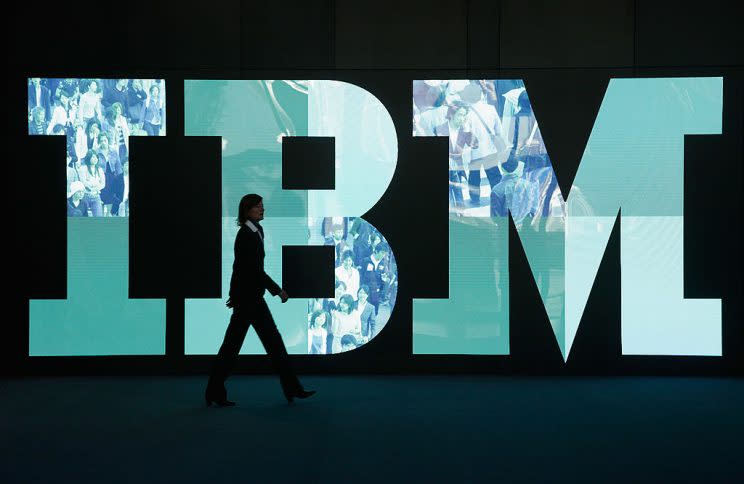Why it might be ‘dangerous’ for IBM to turn itself around: professor

On Tuesday, IBM (IBM) reported its 21st consecutive quarterly revenue decline. That’s more than five years without revenue growth. And at least one prominent business professor thinks Big Blue might be better of simply shrinking by allowing its legacy businesses to fade away, rather than trying to push itself to grow.
“I think IBM has had a good run,” NYU Stern School of Business professor Aswath Damodaran told Yahoo Finance. “Not all companies last forever. There is a life cycle to a company. They are born grow and then decline. They [IBM] have been in decline for 10 or 12 years.”
Damodaran, who teaches corporate finance and valuation, says trying to force growth in older companies like IBM could actually have a negative impact on them, because they might end up simply throwing good money away.
“When you’re 75, you’d love to be 35 again, but you’re not going to,” Damodaran said. “So that’s the way I think of aging companies. Trying to turn them around might be the most dangerous thing you can do.”
‘We continue to believe IBM will merge … much stronger’
So how exactly is IBM trying to turn itself around? By focusing on what it calls its strategic imperatives. Those include businesses like the cloud, cybersecurity, mobile, analytics and its Watson AI solution. According to IBM vice president of finance and issues communications Ian Colley, the company’s strategic imperatives have grown from $13 billion in business in 2010 to $34 billion.
Unfortunately, the firm’s legacy portions, which are made up of hardware and software offerings, are still weighing it down.
Year-over-year revenue was down 4.7% in the second quarter of 2017 to $19.3 billion. That, according to Reuters, is the largest decline in the company’s last five quarters.
Still, the firm’s cloud business saw a 15% revenue increase to $3.9 billion, while the analytics division saw a 4% increase to $5.1 billion.
And as Colley points out, IBM divested itself of more than $8 billion in annual low-value revenue in recent years.
“IBM is focused on delivering high value tech solutions to clients…and increasingly that means apply new IT models, such as Cloud, AI, etc, to help enterprises unlock and leverage their enterprise data in new ways,” he said.
IBM is still the 20th most influential company on the Dow in terms of market cap. What’s more, the during an interview with CNBC, IBM CFO Martin Schroeter said he is confident IBM will grow again, adding that the company is taking time to invest in “the right places.”
Some analysts were also somewhat optimistic about IBM’s future following its earnings, with Brian White of Drexel Hamilton saying the company is showing progress in its transition away from its legacy business and towards its strategic imperatives, which include its cloud division.
“We continue to believe IBM will emerge from this transition a much stronger IT organization,” White said in a research note.
Steve Milunovich of UBS meanwhile wrote in his own note that IBM is showing signs that it is stabilizing.
Challenges from Amazon, Microsoft and Google
Still, not everyone is so high on IBM’s Watson. Jefferies analyst James Kisner issued a report prior to IBM’s earnings saying that while the company’s AI platform is among the most mature on the market, setting up the service requires “significant consulting work.” That can seem unattractive to customers, pushing them to similar offerings from the likes of Amazon.
IBM’s cloud platform meanwhile has to contend with the likes of Amazon’s (AMZN) Amazon Web Service, Microsoft’s (MSFT) cloud and Google’s (GOOG, GOOGL) enterprise cloud services. Amazon is the big dog in the cloud space, though, thanks to its decision to jump headlong into the business before many of its competitors.
Still, IBM is a 106-year old company that has proven it can weather incredibly volatile changes in the technology industry ranging from the birth of the personal computer to the mobile revolution and now the war for the cloud.
In other words, don’t count out the Big Blue just yet.
Related:
More from Dan:
Microsoft Surface Laptop review: A great notebook with one small flaw
Amazon’s Echo and other smart speakers do much more than you realize
Amazon’s imperfect Echo Show is the smart device I’ve always wanted
China vs the World: Smartphone giants face a low-cost threat
Email Daniel at [email protected]; follow him on Twitter at @DanielHowley.
